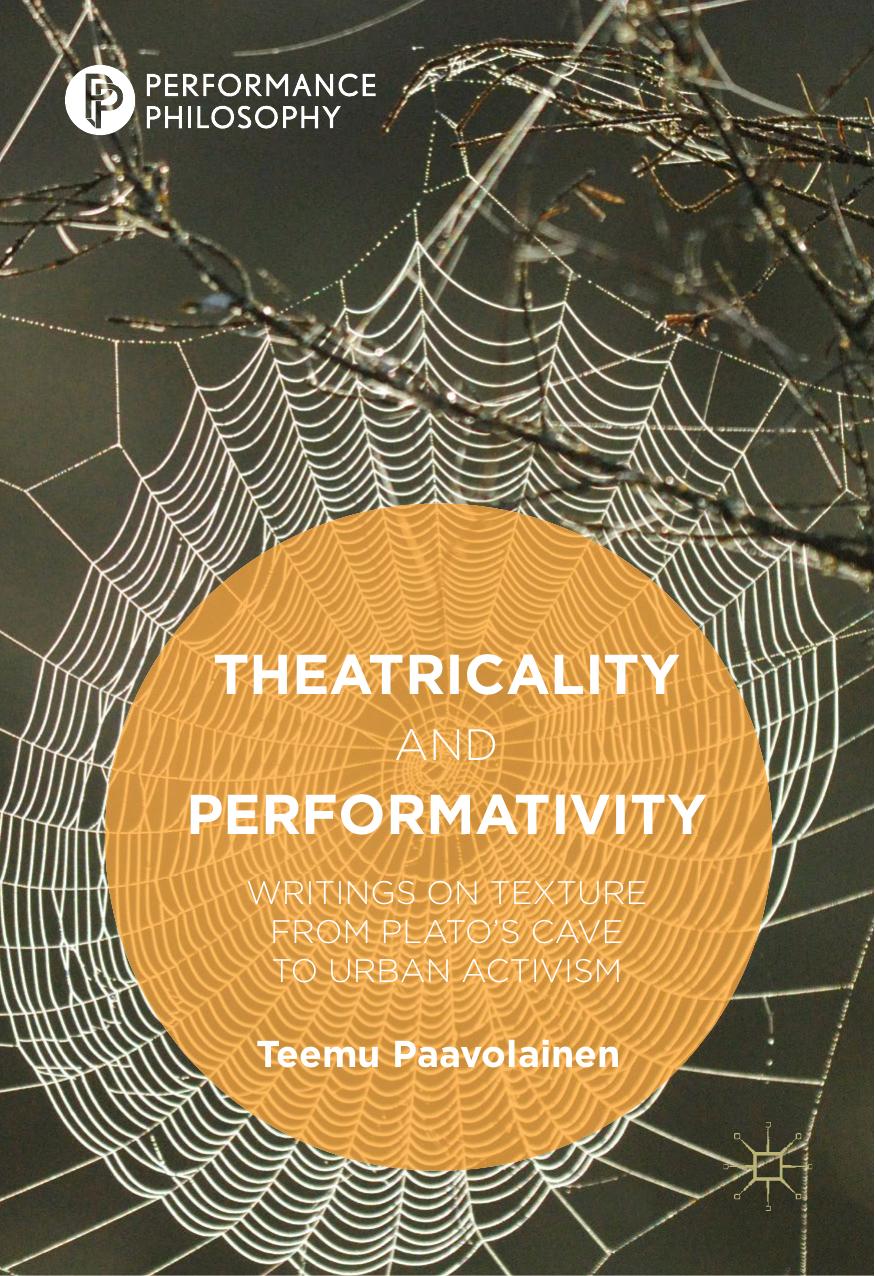Theatricality and Performativity by Teemu Paavolainen

Author:Teemu Paavolainen
Language: eng
Format: epub, pdf
Publisher: Springer International Publishing, Cham
Strand 2: Footfalls—A Performative “Dreadfully Un—…”
In Footfalls, as first directed by Samuel Beckett himself in two productions of 1976, the ghostly figure of May would differ from old Salieri in certain graphic respects.54 First, rather than embracing the audience, her hands would be tightly clasped across her own shoulders from the start, expressing that she “is there exclusively for herself.”55 Second, and again in a ninety-degree angle from Salieri’s theatrical pandering, she is confined to pacing a shallow strip of dimming light “downstage, parallel with front , length nine steps, width one metre, a little off centre audience right” (399)—an aesthetic of pictorial flatness likely inherited from the symbolists, but also much reminiscent of Fuchs .56 (We later learn that “this strip of floor” was once “carpeted, a deep pile,” until May, still a child, insisted that she “must hear the feet, however faint they fall” [401].) Third, the narration remains deeply ambiguous in referent, addressee, and speaker alike, divided between ‘M’ and ‘V’—May and an older, unseen woman’s Voice—across the play’s four movements; these are separated by blackouts and echoing chimes. In the first part, theirs is an almost naturalistic dialogue between mother and daughter, while the second and third parts are effectively monologues by V and M, respectively. If all three end on the image of May’s “revolving it all” in her “poor mind,” the final “fade up to even a little less still on strip” reveals “no trace of MAY” on stage (403).
Thus Beckett’s theatrical minimalism itself seems to hover between the Platform and the abstract Image—the almost Friedian literalism of the pacing woman’s insistent objecthood , and her slowly growing more and more insubstantial: for Billie Whitelaw , her “spiralling inward” and then “evaporating, dissolving like smoke.”57 In May’s final monologue, her caved existence is reduced to a Platonic “semblance” of a faint “tangle of tatters” (402), doubled in her ghostly costume of torn grey lace, “worked like a cobweb”58 and with no Shafferian transformation acts readily forthcoming.
In Fig. 4.2, however, I depict the meticulous dramaturgical fabric that underlies the tattered appearance of Footfalls: what I call the vertical ‘warp ’ of its internal echoes, and across which the ‘weft’ of words and movements proceeds horizontally to and fro. (It is remarkable to what extent images of weft in weaving correspond with the serpentine diagrams of May’s pacing that pervade Beckett’s notebooks on the play.59)
Three notes are in order. First, the bold text, for stage directions, is not verbatim—except when in quotation marks—and rather reflects Beckett’s director’s notebooks than any standard versions of the play, such as the one I refer to by page numbers. When I refer to strips of the play with pairs of letters and numbers from the figure, the numbers are mine, the letters are Beckett’s (as is the naming of the four parts).60 Second—apart from the regular/italic-type distinction between M and V—the spoken text is only cited very elliptically, highlighting the play’s intricate structure of echoes and repetitions. In addition to
Download
Theatricality and Performativity by Teemu Paavolainen.pdf
This site does not store any files on its server. We only index and link to content provided by other sites. Please contact the content providers to delete copyright contents if any and email us, we'll remove relevant links or contents immediately.
| Coloring Books for Grown-Ups | Humor |
| Movies | Performing Arts |
| Pop Culture | Puzzles & Games |
| Radio | Sheet Music & Scores |
| Television | Trivia & Fun Facts |
History of Dance, 2E by Gayle Kassing(3178)
Fantastic Beasts: The Crimes of Grindelwald - the Original Screenplay by J. K. Rowling(2905)
Harry Potter and the Cursed Child by J. K. Rowling & John Tiffany & Jack Thorne(2035)
Crooked House by Christie Agatha(2008)
Smilla's Sense of Snow by Peter Hoeg(1905)
My Dark Places by James Ellroy(1881)
Star Wars The Rise of Skywalker The Visual Dictionary by Pablo Hidalgo(1846)
The Velvet Rage by Alan Downs(1811)
Brokeback Mountain by Annie Proulx(1782)
Tolkien, J. R. R. - The Hobbit by Tolkien J. R. R(1772)
The Hunger Games - 01 - The Hunger Games by Suzanne Collins(1632)
The Anatomy of Story: 22 Steps to Becoming a Master Storyteller by John Truby(1470)
Medea and Other Plays by Euripides(1402)
We Need New Names by Noviolet Bulawayo(1343)
The Great Mortality by John Kelly(1334)
Musicophilia by Oliver Sacks(1238)
Coriolanus by William Shakespeare(1187)
This Is Your Brain on Music by Daniel J. Levitin(1154)
The Phantom Menace (by Terry Brooks)(1133)
